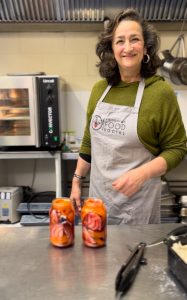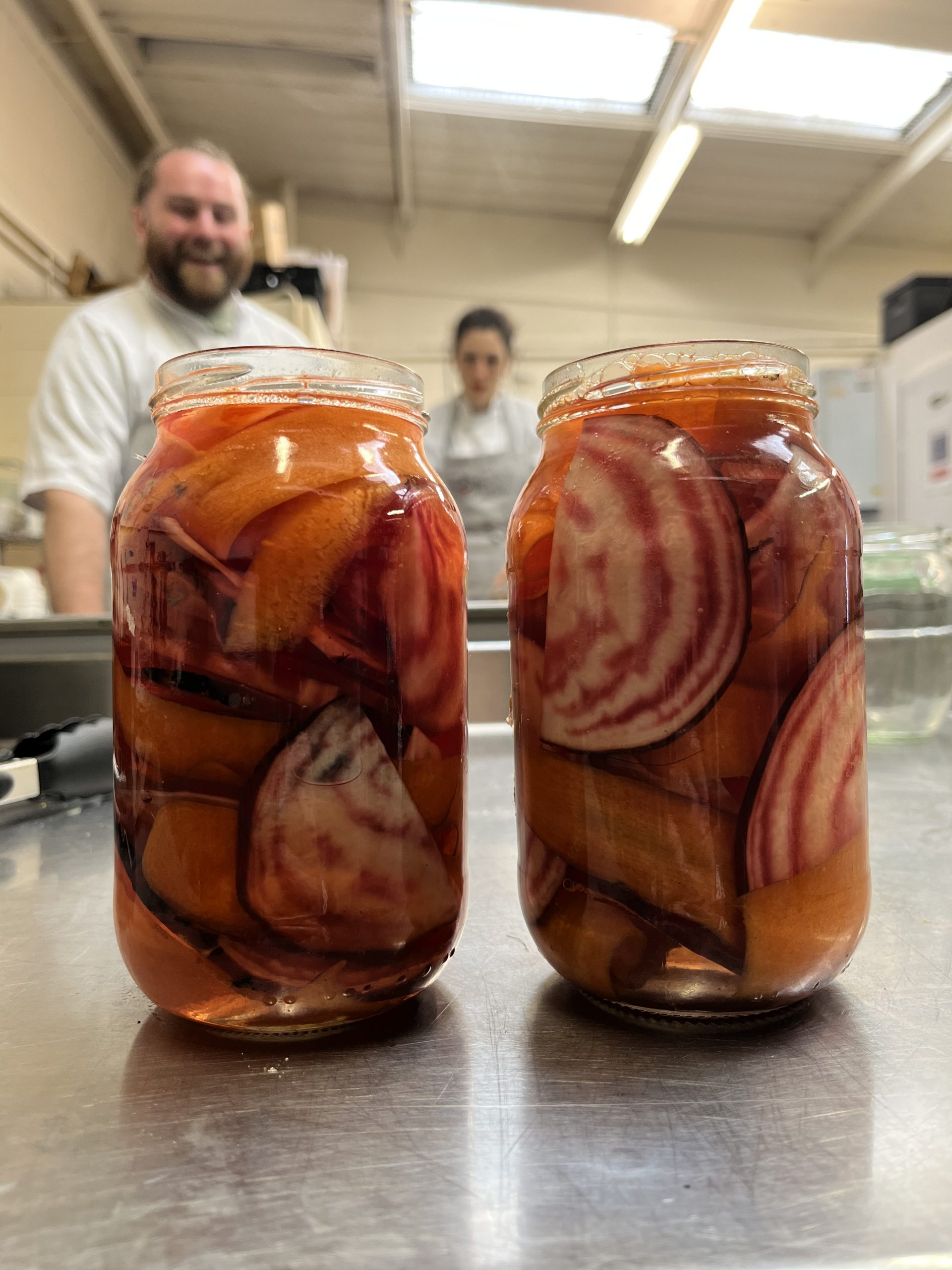At Edinburgh Food Social, we love food that’s homemade, cooked together, and shared with friends. Even better if it’s an ingredient that keeps on giving — whether it’s at family breakfasts, dinner parties, or quick lunches. Fermenting and preserving seasonal produce is a technique used in almost every culture and in almost every country, and Scotland is no exception. For centuries, people here have been salting fish, curing meat, and pickling vegetables — traditions that helped communities thrive through long as winters and short growing seasons. Here in Scotland, one lesser-known example is sowans, a fermented oat dish made by soaking the husks left after milling and allowing them to sour before cooking the starch that settles — a clever way to use every part of the grain. We should be inspired by these ancient techniques — learning how to use them at home is a simple and sustainable way to add flavour, nutrition, and creativity to everyday meals.

Preserving some beetroot to use over winter.
Fermenting draws out incredible flavour from fresh fruit and vegetables, but it’s really good for your body too. At its heart, fermentation is about giving nature a helping hand. It’s simply vegetables, a little salt or brine, and some patience while the good microbes get to work — breaking down sugars, creating acids, and making food more digestible. Research shows that eating fermented foods regularly can help diversify your gut microbiome and reduce inflammation.
With a few good condiments in your kitchen, you can make a meal out of almost anything. We love adding kimchi to scrambled eggs, sauerkraut to sandwiches, or homemade pickles to a cheese board — quick, delicious touches that bring any dish to life.
Unfortunately, not all ferments are created equal. Researchers at King’s College London recently found additives in almost a third of the fermented food products they tested from UK supermarkets. Unfortunately, these additives — including sugar and artificial sweeteners — can mean that some fermented products can technically be classified as ultra-processed. And that’s more likely to give us grumpy guts than happy ones! These supermarket products are often pretty expensive, too.

Much better (and cheaper) than shop bought pickles!
Preserving food at home — through pickling, jarring, freezing, or making jams — lets us capture produce at its best, extend its shelf life, and cut down on waste. It’s about celebrating the seasons and making sure fewer good things end up in the bin. From sweet berry jams to sharp chutneys and crunchy pickled onions, there’s endless satisfaction in opening a jar of something you’ve made yourself. And swapping high-sugar, shop-bought jams or chutneys for homemade ones is a small change that makes a big difference.
That’s why we’re dedicating a whole class to the art of fermenting and preserving. Join us this November to get hands-on, fill your own jars, and learn simple techniques that will transform how you cook, eat, and think about food. We believe that when people have the skills to fill a few jars with something nourishing, it can make a real difference to how they eat every day. Making healthy choices isn’t only about cutting things out — it’s about adding in foods that make you feel great too.



